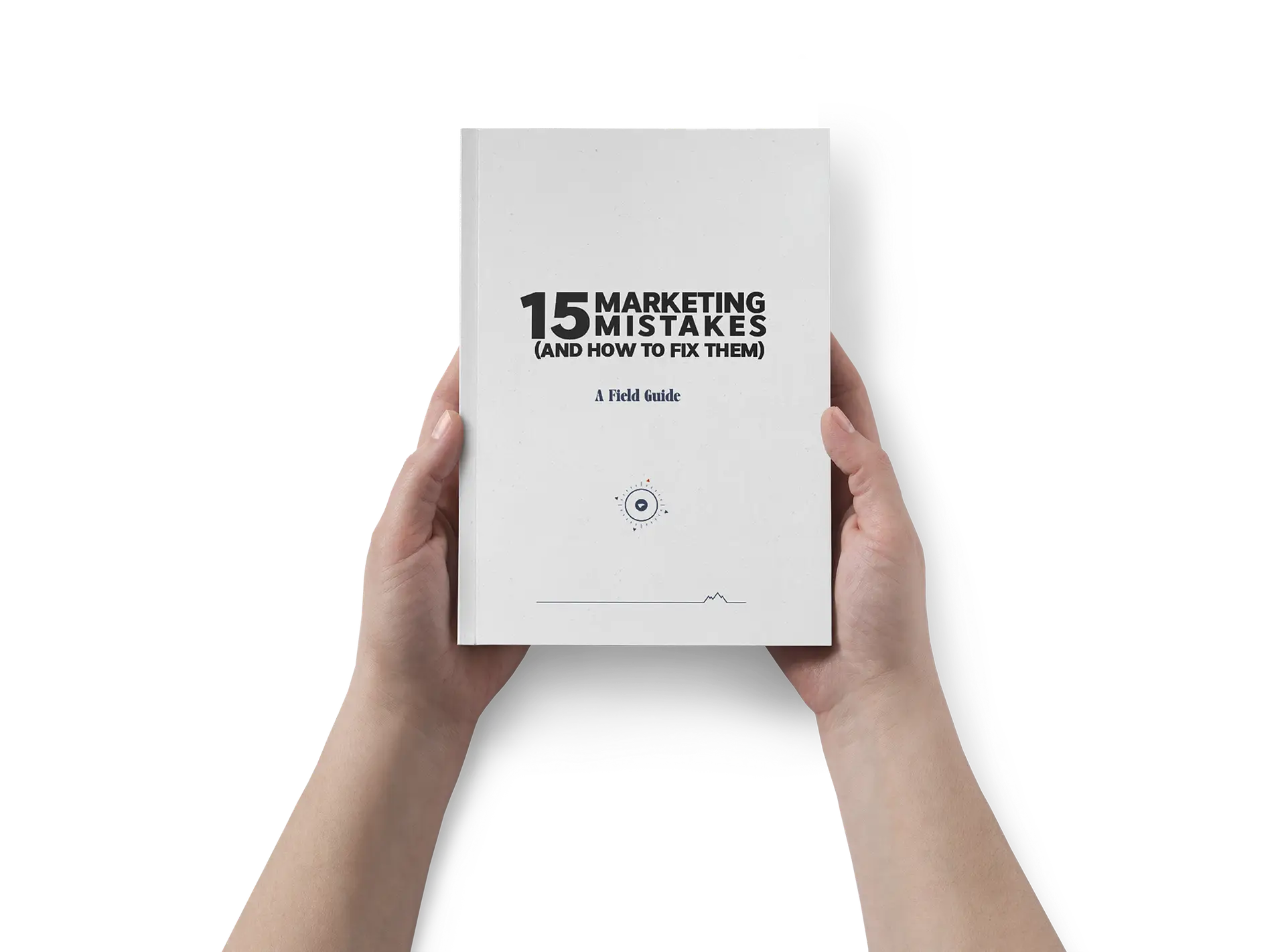TL;DR: Why User-Generated Content UGC Matters for Modern Brands
User-generated content UGC builds trust by showcasing real stories, reviews, and visuals from everyday customers.
It boosts your brand’s reach and engagement across social, web, and email—without high production costs.
UGC drives conversions by acting as powerful social proof during key buying decisions.
You can collect user-generated content UGC through prompts, hashtags, challenges, and team participation.
Repurpose user-generated content UGC across platforms to strengthen authenticity, loyalty, and community connection.
In a world where trust is earned, not bought, user-generated content (UGC) has become a guiding star for modern brands. It’s the raw, authentic voice of your customers out in the wild—real stories, real results, and real connection.
At EV Agency, we see UGC as more than just marketing content. It’s a conversation, a trailhead to stronger brand loyalty, and a compass for building community.
What is user-generated content (UGC)?

User-generated content (UGC) refers to any content—videos, images, reviews, testimonials, blog posts—created by your customers instead of your brand.
It’s the kind of content that bubbles up organically when people are excited about your brand. Think Instagram stories tagging your product, unfiltered YouTube reviews, or candid before-and-after shots shared on Reddit.
It’s different from brand content because it doesn’t follow a script. It’s raw, unscripted, and real. That’s what makes it so powerful.
UGC generally comes in two forms:
Organic UGC:
This is content people create and share on their own—unsolicited and driven by genuine enthusiasm or satisfaction.
It includes spontaneous shoutouts, customer stories, and everyday social posts that mention your brand.
Paid UGC:
Here, creators are hired to produce relatable, user-style content that mirrors the authenticity of organic UGC.
These creators may not be traditional influencers; they’re skilled storytellers crafting product demos, reviews, or lifestyle content with a natural feel.
Whether organic or paid, UGC captures how real people experience your brand.
It builds trust, drives conversation, and gives potential customers a glimpse of your product in action—outside the polished studio setting.
The value of user-generated content

User-generated content UGC is powerful because it comes straight from the source: your customers.
These are the folks who have already bought into your story, used your product, and seen the results firsthand. Their voices matter. They don’t just repeat your marketing message; they validate it with their own experiences.
Building Trust with UGC
Real people sharing genuine content helps potential buyers trust right away. In fact, UGC often converts better than brand-created content because it feels honest and relatable. It also inspires a sense of belonging. Your customers aren’t just observers; they become part of the story. This creates:
Emotional investment
Brand loyalty
Benefits of UGC for Your Brand
Even better, UGC gives your brand a rich library of content to reuse across channels. The benefits include:
Boosting SEO through fresh content
Improving email open rates with authentic testimonials
Creating engaging social media posts
These advantages ripple throughout your entire marketing strategy. UGC is flexible, scalable, and—best of all—highly effective. For any brand looking to strengthen connections and grow with authenticity, user-generated content (UGC) is a no-brainer.
Types of user-generated content
User-generated content UGC shows up in many different forms. Each type helps your brand connect with people in unique and powerful ways.
Let’s explore both organic and paid UGC and how you can use each one in your marketing.

Organic UGC
This is the most natural and authentic form of user-generated content UGC. It’s created freely by your customers because they love your product and want to talk about it.
Reviews and testimonials
Customer reviews are a goldmine of trust. These short blurbs or detailed stories offer social proof and help others feel confident about making a purchase. Add them to your website, product pages, or even email campaigns to increase conversions.
Photos
Photos taken by your customers—whether it’s an Instagram selfie or a snapshot of your product in action—give your brand a human face. They also show what your product looks like in the real world, not just a studio.
Videos
From unboxings to how-to tutorials, customer videos bring your product to life. These videos are often more trusted than polished ads because they show real results from real people.
Social media content
Posts, stories, tags, and mentions all count as UGC. Hashtags make it easy to find and reshare content your audience is already creating. Use social listening tools to track and engage with this content in real-time.
Blog posts
Some customers or influencers may write full blog posts featuring your product. These long-form pieces can be great for SEO, storytelling, and highlighting use cases from a customer’s perspective.

Paid UGC
Paid user-generated content is created by skilled content creators who are hired to craft brand-related content. They might not have large followings like influencers, but their work is often highly relatable and feels just as authentic.
These creators can produce:
Product tutorials
Lifestyle photos
Short-form videos for TikTok or Instagram
Honest reviews tailored to your audience
Since they understand what resonates with modern consumers, paid UGC can be a smart, scalable way to boost your brand’s voice across different platforms—especially when organic content is still ramping up.
Together, both types of UGC give your marketing a personal, down-to-earth tone that builds trust and drives action.
Why user-generated content is important

Authenticity
User-generated content is the real voice of your customers, sharing honest experiences. It feels more trustworthy and builds stronger connections because it’s not created by marketers or designers. Many buyers trust it more than ads.

Brand loyalty
When people see their content featured, they feel valued. This recognition turns customers into brand advocates. UGC creates a sense of community that keeps people coming back.

Social proof
Humans follow social cues. When others use and love your product, they’re more likely to try it. UGC proves real people believe in your brand.

Content curation
UGC gives you fresh content without doing it all yourself. It showcases customer stories, reviews, and visuals, saving time and adding a personal touch.

Cost-effectiveness
Making ads and branded videos can cost a lot. UGC is the opposite – very affordable. A short customer video can outdo a big-budget campaign, making a big impact without breaking the bank.
Get our Free Guide – 15 Marketing Mistakes & How to fix them.
Download our free eBook that uncovers 15 common marketing mistakes and how to avoid them.
How to make the most of user-generated content

User-generated content UGC is a powerful tool, but to get real results, you need to use it the right way.
That means being intentional about how you collect, share, and repurpose it.
This section will guide you through simple, effective strategies that help you unlock the full value of UGC—while also building stronger relationships with your community.
1: Actively prompt customers to share
Don’t wait for content to show up—invite it. Include friendly calls-to-action on your website, product packaging, or emails.
Start social media challenges and create branded hashtags that are easy to remember and fun to use.
You can also ask specific questions like, “How do you use our gear outdoors?” or “What’s your favorite feature?” These prompts give people direction and increase the chances they’ll respond.
2: Reward customers for sharing
When people take the time to share their experiences, it deserves a thank you. Small rewards like a shoutout on your Instagram feed, a discount code, or entry into a giveaway can go a long way.
You’ll not only boost engagement, but also show your community that their voice matters.
3: Let all your staff in on the fun
Your team knows your brand best, and their voices add another layer of authenticity. Encourage employees to share behind-the-scenes moments, day-in-the-life videos, or fun workplace stories.
This type of employee-generated content (EGC) builds internal culture and gives your audience a genuine look at the people behind the brand.
4: Look for and implement UGC in more ways than just social sharing
UGC works everywhere—not just on Instagram. Add customer quotes to your website, include real-life product images in emails, or use testimonial videos in digital ads.
You can even incorporate UGC into printed materials or product packaging. The key is to keep it consistent across channels so your messaging feels human and real.
5: Implement best practices for working with UGC
To use user-generated content UGC effectively and ethically:
Always ask permission before reposting or reusing someone’s content.
Credit the creator clearly, whether it’s tagging them on social media or including their name in a testimonial.
Be specific about what kind of content you’d like—this helps guide submissions.
Align with your goals by connecting UGC to brand awareness, trust-building, or sales.
Measure results with analytics tools to see what content performs best.
Showcase diversity by highlighting different voices, faces, and experiences.
By following these steps, your UGC strategy will not only stay respectful and intentional but also drive long-term value for your brand.
5 great examples of user-generated content

To fully understand the impact of user-generated content UGC, let’s look at how real brands are using it in action.
These examples show the different ways UGC can be used to build trust, drive engagement, and grow a loyal community. Each brand below taps into the authentic voices of their audience—and the results speak for themselves.
GOPRO
GoPro has built its YouTube empire on user-generated content UGC. Instead of only sharing company-made videos, they showcase thrilling, raw footage captured by everyday users.
From snowboarding in the backcountry to skydiving with friends, these customer videos have racked up millions of views—and cost the brand nothing to produce. It’s proof that your customers can be your best content creators.
LULULEMON
The Canadian athleticwear brand uses the hashtag #thesweatlife to inspire fans to share how they live an active, balanced lifestyle.
This campaign encourages real users—not just influencers—to post authentic photos and stories. As a result, lululemon has built a thriving online community and extended its reach far beyond traditional ads.
LACROIX WATER
LaCroix uses everyday customer posts to keep its social media fun, colorful, and highly relatable.
They don’t rely on celebrity endorsements—instead, they celebrate regular fans sipping their sparkling water at home, at the beach, or on the go. This strategy helps their brand feel more down-to-earth and connected to their audience.
Well Traveled Club
This travel-focused membership brand uses user-generated content UGC from its members to showcase real trips, destinations, and experiences.
Whether it’s a sunset view from a rooftop or a cozy café recommendation, Well Traveled relies on its community to paint the full picture. The result? Content that feels genuine, aspirational, and deeply rooted in the real experiences of its users.
EDLOE FINCH
Edloe Finch, a boutique furniture brand, invites customers to submit photos of their homes featuring the company’s pieces.
These images are then used right on the product pages, giving shoppers an honest view of how items look in real-life spaces. It’s a brilliant way to build trust and provide powerful visual social proof during the buying journey.
4 best practices for user-generated content

Using user-generated content UGC is a great way to build trust and connection, but it needs to be handled with care.
When you follow best practices, you show respect to your community and protect your brand reputation. These tips will help you get the most out of your UGC strategy—while keeping it ethical, effective, and aligned with your goals.
Always request permission
Even if someone tags your brand or uses your hashtag, don’t assume you can use their content. Always ask first.
Sending a quick message to request permission shows respect and builds trust. Plus, it protects your brand from legal issues and keeps your relationships strong.
Credit the original creator
When you repost or reuse someone’s content, always give them credit. Tag them in your social media captions, mention their name, and say thank you.
This small gesture goes a long way in making people feel seen and appreciated—and encourages more customers to share their experiences.
Be clear about what kind of content you’re looking for
Not everyone knows what makes good UGC. Give your audience examples and ideas.
Whether it’s a photo using your product outdoors, a 30-second video review, or a quick tip, being specific makes it easier for people to participate—and helps you gather more useful content.
Be strategic and set goals
It’s easy to collect UGC just for fun, but the best results come when you know what you’re trying to achieve.
Do you want to boost brand awareness? Increase social engagement? Drive sales? Tie your UGC efforts to clear goals and use analytics tools to measure what’s working.
Then, adapt your strategy to get even better results over time.
Tips For Incorporating User-Generated Content In Your Marketing

When it comes to user-generated content UGC, the possibilities are endless—but only if you know how to tap into them.
UGC isn’t just about collecting cool photos. It’s about creating a loop of interaction, trust, and visibility that benefits both your brand and your customers. These tips will help you build a strategy that feels authentic, inclusive, and full of energy.
Think Beyond Hashtags
User-generated content UGC is more than a social media trend. While hashtags help collect and track content, great UGC also lives in customer reviews, feedback emails, video tutorials, or blog shoutouts.
Explore all the places your brand lives—and let UGC shine there, too.
Start With Strong Content Generation Ideas
UGC starts with a story. What kind of experience do you want your customers to share? Maybe it’s how your product helped them overcome a challenge or made their day easier.
Build your campaigns around a clear, meaningful idea that invites people to join in.
Become Part Of The Customer Conversation
Don’t just sit back and collect content—engage with it. Like, comment, and share when customers post about you. Join the discussion in a way that feels genuine.
This helps your brand feel more like a friend than a logo.
Leverage Generative AI
Use AI tools to track trends, summarize feedback, and even identify the types of UGC that perform best. With the right insights, you can adapt faster, spot opportunities, and serve your audience more effectively.
Maintain An Active, Collaborative Online Presence
The more active you are online, the more UGC you’ll inspire. Respond to comments, answer questions, and show your face in stories or lives.
The more human your brand feels, the more people will want to interact with it.
Build A Thriving Brand Community
UGC thrives in spaces where people feel welcome. Create a Facebook group, subreddit, or Discord server where your fans can connect—not just with you, but with each other.
Strong communities lead to strong content.
Encourage Your Audience To Share Their Ideas
Sometimes the best content comes from a simple question. Ask your followers what they want to see next, how they use your product, or what they love most.
This opens the door for them to co-create with you.
Cross-Post Relevant Content From Your Team
Your internal team is full of brand ambassadors. Encourage them to share their workday, favorite products, or customer success stories.
Cross-post this EGC (employee-generated content) on your public channels to deepen trust and humanize your brand.
Share Customer Feedback Across Platforms
Don’t let that glowing 5-star review sit on one site. Turn it into a quote graphic, embed it in emails, or feature it on landing pages. UGC works best when it’s seen in more than one place.
Provide Clear Guidelines And Incentives For Participating
If you want more user-generated content UGC, give people a clear roadmap. What kind of content should they share? What hashtag should they use? What’s in it for them?
Clear rules and a little reward can drive big participation.
Include Employee-Generated Content
Your team members have insider perspectives that add a personal touch to your brand. EGC helps bridge the gap between company and customer.
Share behind-the-scenes content, stories, or staff tips to give your brand more heart.
Make Your Social Posts Interactive
Posts that ask questions or include polls invite your audience to engage. Use prompts like “What’s your favorite way to use [product]?” to spark conversation and encourage content creation.
Create Sharp, Specific CTAs
Instead of vague directions like “Share your story,” give a direct and catchy prompt. Try “Tag us with #MyTrailGear for a chance to be featured.” This boosts clarity and action.
Spotlight UGC On Social, Email And Your Website
User-generated content UGC should be featured wherever your brand shows up. Create carousels for Instagram, add reviews to your email marketing, or highlight fan photos on your homepage.
The more places you use it, the more impact it has.
Capitalize On FOMO
Use UGC to show what people are doing with your brand right now. When others see the fun, the impact, or the results, they’ll want to be part of it, too.
Celebrate And Share Your Customers’ Experiences
Every time you feature a customer, you strengthen your relationship. Share their wins, tell their stories, and make them feel like heroes. UGC works best when it’s about people first, products second.
User-generated content UGC is any content—like reviews, photos, videos, or blog posts—created by your customers instead of your brand. It’s authentic, real-world content that reflects how people actually use and enjoy your product.
UGC builds trust faster than traditional ads. It feels more relatable, adds authenticity to your marketing, and helps turn customers into loyal brand advocates.
Ask for it clearly. Use branded hashtags, run giveaways, or launch challenges. Feature customer stories in emails or on your website. The easier and more rewarding it is, the more people will join in.
No. Always get permission first. It shows respect, protects your brand legally, and strengthens your relationship with the creator. Don’t forget to give credit where it’s due.
Everywhere! Share UGC on your social channels, website, emails, paid ads, product packaging, and even in press releases. It builds consistency and boosts credibility wherever your audience encounters your brand.
Keep Growing • More Dispatches from Basecamp
Create a marketing strategy and plan that converts. Use our simple, proven method to guide customers from curiosity to commitment.
Clarify your message and boost conversions with the StoryBrand framework—a proven guide to help brands connect and grow with clarity.
Social media marketing vs digital marketing: Understand the differences, benefits, and when to use each. Learn how to combine both for real growth.
Discover the importance of storytelling in the energy sector to enhance credibility and engage with audiences effectively.
A future-ready website built with strategy, accessibility, and community in mind.
Designing your small business website? Learn how to choose the best builder, add essential tools, and optimize for SEO. A step-by-step Canadian guide for entrepreneurs in 2025.
Find the right web design company Vancouver trusts to drive growth and enhance online presence with custom solutions.
Discover how to use social media as marketing to build brand awareness, connect with customers, and drive real business growth. This complete guide offers practical strategies, tools, and insights for success.
Gain a competitive edge in the digital landscape with a Canada digital marketing company. Let experts guide your growth journey.
Discover how to market your construction company in 2025. This guide covers branding, lead generation, digital strategy, SEO, and more.












